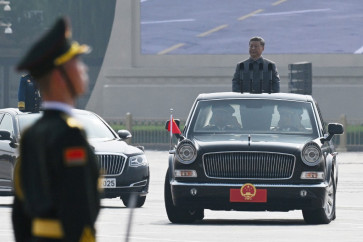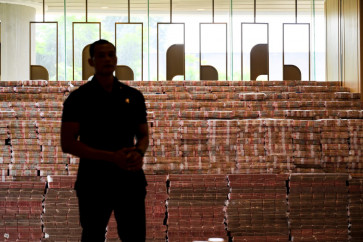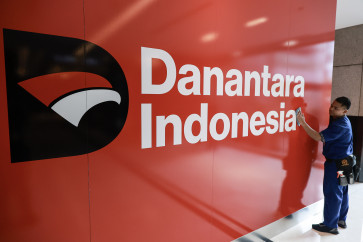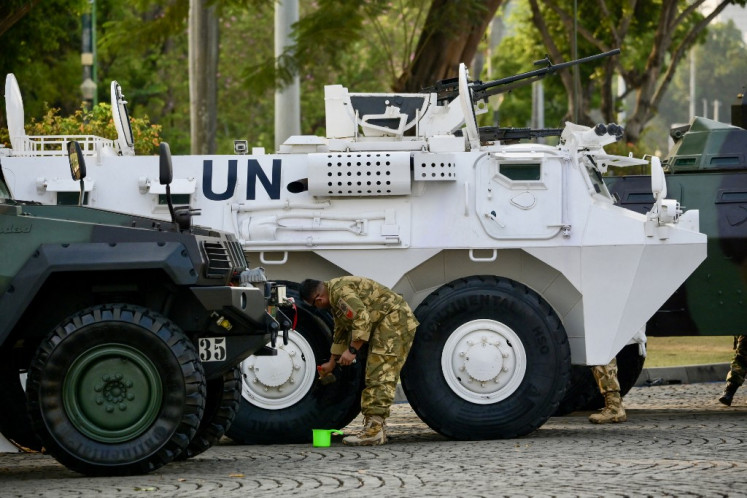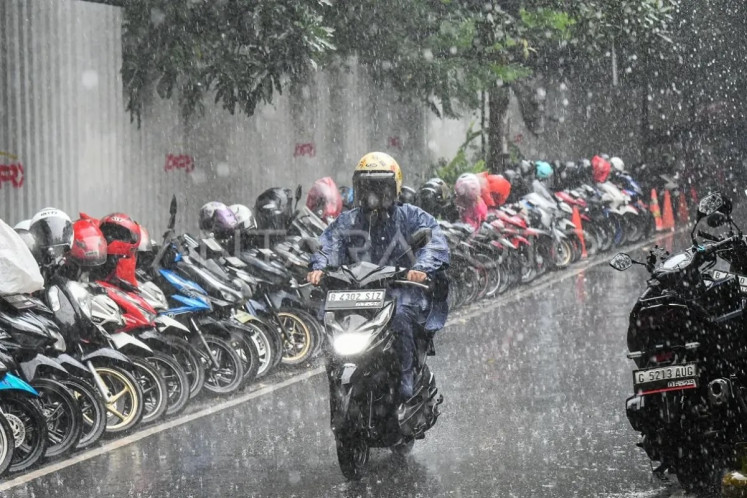Popular Reads
Top Results
Can't find what you're looking for?
View all search resultsPopular Reads
Top Results
Can't find what you're looking for?
View all search resultsPapua turmoil and its people's discontent
The violent unrest and demonstrations that occurred this month in several cities in Papua that have killed dozens and injured hundreds has brought to our attention the Papuans’ feelings of anger and frustration as well as the question of how economic growth in our easternmost province has benefitted Papuans
Change text size
Gift Premium Articles
to Anyone
T
he violent unrest and demonstrations that occurred this month in several cities in Papua that have killed dozens and injured hundreds has brought to our attention the Papuans’ feelings of anger and frustration as well as the question of how economic growth in our easternmost province has benefitted Papuans.
In the six years from 2013 to 2018, the Papua regional gross domestic product (RGDP) grew at a higher rate than national growth in GDP, driven largely by mineral exports. But things began changing in the fourth quarter of 2018, when copper production and exports plummeted. PT Freeport Indonesia (PTFI), which has the largest recoverable copper and gold reserves in the world at Grasberg, started phasing out copper production at the Grasberg open-pit mine and transferring its production focus to the huge Grasberg Block Cave underground mine.
This has had a huge impact on the Papuan economy. Its growth rate has contracted over three quarters, contracting 18 percent in the fourth quarter of 2018, 19 percent in the first quarter of 2019, and a huge 24 percent in the second quarter 2019. Papua’s economy has thus been in a deep recession over these three quarters. Economic contraction at this magnitude must have been painful for the Papuan people.
But that is the price Papua has had to pay for the structural imbalance in its economy. The Papuan economy depends on a single commodity and a single company. Last year PTFI’s sales revenue was US$6.5 billion, equivalent to 45 percent of the Papua RGDP. It is rare that the sales revenue of a single company makes up such a huge chunk of a provincial economy.
Exports from Papua fell 75 percent from January to June 2019 to $580 million, causing an 80 percent drop in export tax.
Open unemployment increased from 3.2 percent in August 2018 to 3.4 percent in February 2019. It is getting increasingly more difficult for university graduates and vocational school (SMK) graduates to find jobs in Papua. Unemployment among university graduates increased from 6 to 8 percent, while unemployment among SMK graduates soared from 2 to 8 percent. When these young people cannot find jobs, they will vent their anger and frustration as the opportunity arises, creating social tension and conflict.
The prospects of increasing employment in the short term do not look good. PTFI, the largest employer in the province, has not started recruiting new permanent employees, because it is using only outsourced workers while constructing the Grasberg underground mine.
The Papua provincial administration has no fiscal space to counter the regional recession. The 2019 provincial budget estimated Rp 13.9 trillion ($982.47 million) in revenue, but the Papua administration was only able to raise less than Rp 1 trillion from its own resources. The bulk of its revenue comes from the central government, which includes taxes and dividends from PTFI. Last year, the government received $756 million in revenue from PTFI. In the 25 years covering 1992 to 2017, Indonesia received $17.3 billion from PTFI.
The funds disbursed to Papua from the central government come to Rp 3.7 million per capita. As a comparison, the central government disbursed Rp 2.4 million per capita for Aceh.
Most of the provincial budget is spent on financial assistance to districts, municipalities and villages, with 12 percent on the salaries of Papua provincial employees, and another 21 percent on goods and capital expenditure.
This leaves only 1.3 percent of the budget for public welfare, a meager amount that has caused misery for Papuans, especially those in remote areas. It was reported that famine and malnutrition caused the deaths of 72 people and the hospitalization of hundreds more in Papua last year.
According to UNICEF, 30 percent of Papuan children had not finished elementary and junior high school. In some remote areas, school dropout rates were 50 percent for elementary schools and 73 percent for junior high schools.
The poverty rate increased from 27.4 percent in September 2018 to 27.5 percent in March 2019, three times the national poverty rate, while 930,000 Papuans lived below the poverty line in March 2019, the highest in the province’s history.
Several factors could have contributed to the high poverty rate in Papua, including budgetary misuse, erroneous budgetary targets and corruption. Given the rough terrain of Papua and its sparse population density, it is difficult for social welfare programs to reach targeted groups. It is also due to the poverty line, which continues to rise and causes the cost of living in Papua to increase continually. In the last four quarters, inflation in Papua ranged from 4 to 6 percent, well above the national average of 3 percent. In March 2019, the poverty line in Papua rose to Rp 540,000 from Rp 518,888 in September 2018, pushing more Papuans into poverty.
Papuans also still suffer from unequal access to economic opportunities and basic social services. According to the World Bank, Puskesmas (community health centers) are provided in less than 30 percent of all villages in Papua. A person who lives in a village without a puskesmas can travel at least 24 kilometers to the nearest one. In other provinces, the nearest puskesmas is accessible within an average of 6 km.
The fact that malnutrition and even famine recur in Papua indicates that the local administration has been unable to meet even the minimum needs of its people, despite the large budget disbursed from the central government every year.
If the simmering anger and discontent in Papua explode from time to time, this is because the Papuans feel they have not received a fair slice of the economic pie from their rich and prosperous lands, and so the tensions between the government and the people of Papuan will persist.


